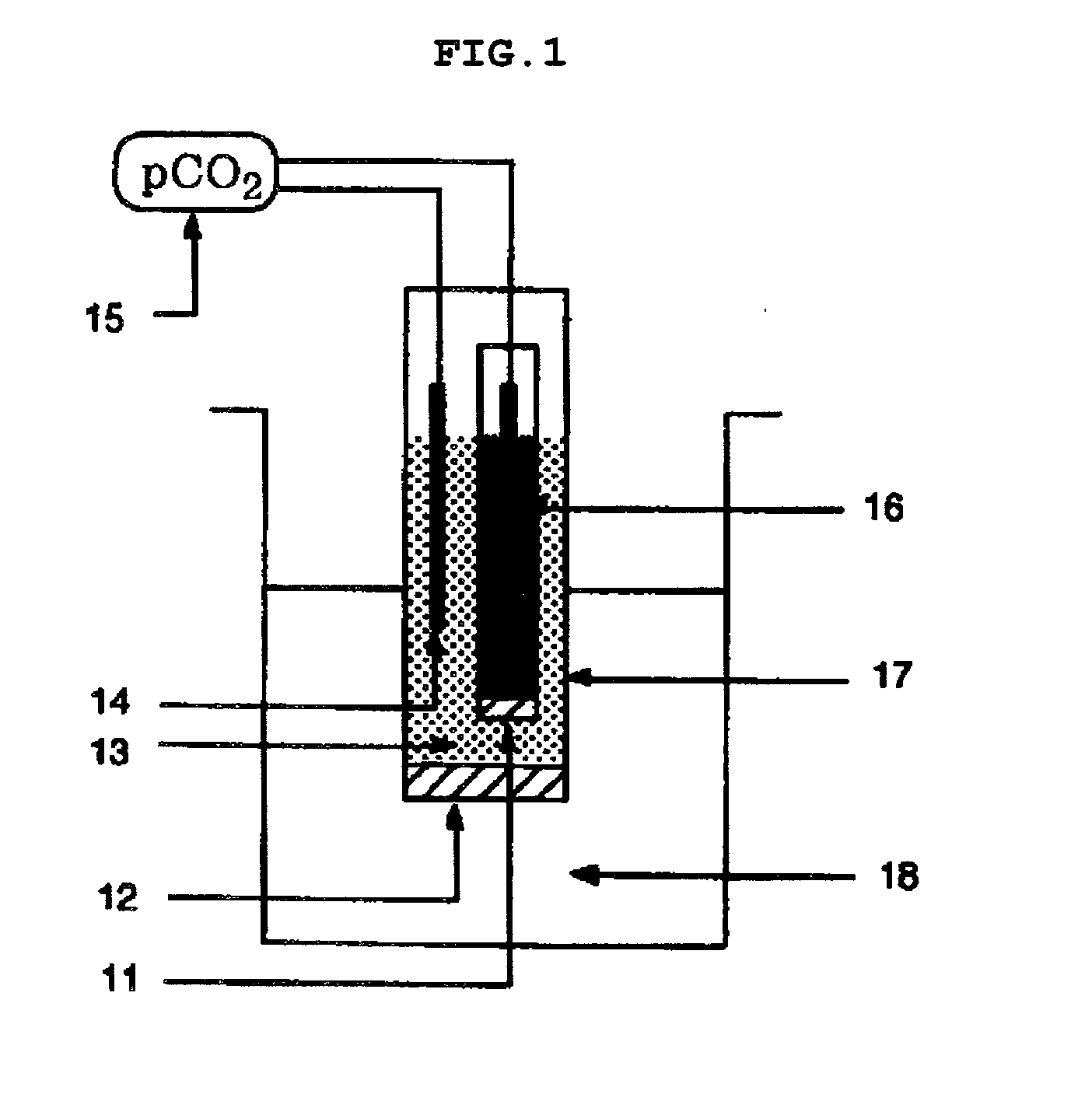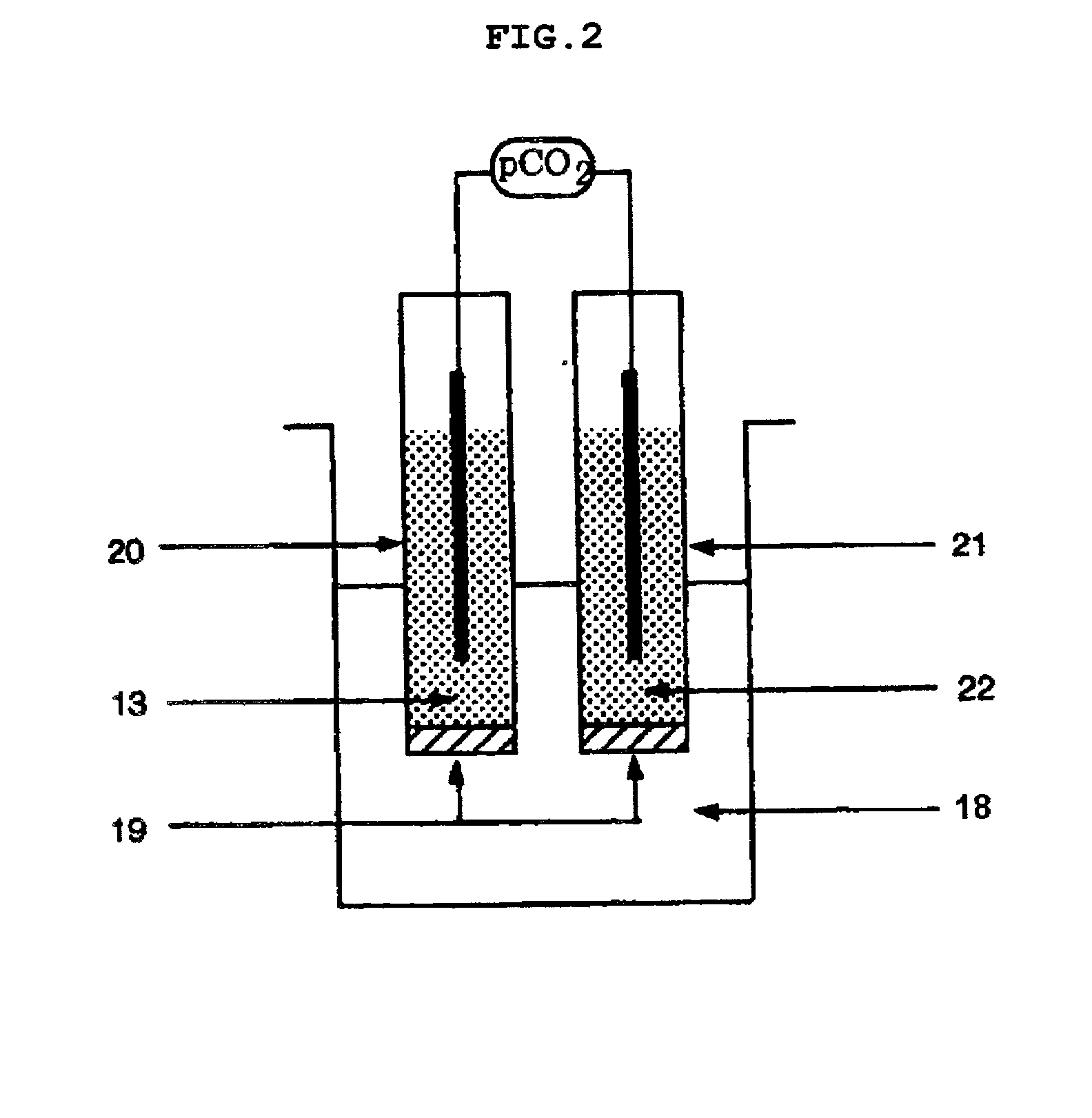Microchip-based carbon dioxide gas sensor
a carbon dioxide and microchip technology, applied in the field of microchip-based can solve the problems of slow sensing rate and recovery rate the difficulty of severinghaus-type carbon dioxide gas sensors in the fabrication and miniaturization of sensors, and the inability to use when the level of carbon dioxide is low, so as to promote the hydration of carbon dioxide, shorten the required period, and increase the sensitivity to the chang
- Summary
- Abstract
- Description
- Claims
- Application Information
AI Technical Summary
Benefits of technology
Problems solved by technology
Method used
Image
Examples
preparation example 2
Preparation of pH-Sensitive Gas-Permeable Membrane 2
[0077] In tetrahydrofuran 450 .mu.l, PU (polyurethane) 32.1 mg, TDDA 2.9 mg, DOS 63.6 mg and KTpClPB 1.4 mg were dissolved, followed by drying the resulting solution at room temperature for 1.about.2 days to prepare a pH-sensitive gas-permeable membrane.
preparation example 3
Preparation of pH-Sensitive Gas-Permeable Membrane 3
[0078] In tetrahydrofuran 450 .mu.l, PVC (polyvinyl chloride) 8.0 mg, PU 24.1 mg, TDDA 2.9 mg, DOS 63.6 mg and KTpClPB 1.4 mg were dissolved, followed by drying the resulting solution at room temperature for 1.about.2 days to afford a pH-sensitive gas-permeable membrane.
preparation example 4
Preparation of pH-Sensitive Gas-Permeable Membrane 4
[0079] In tetrahydrofuran 450 .mu.l, PVC 11.1 mg, PU 33.4 mg, TDDA 4.1 mg, NPOE (2-nitrophenyl octyl ether)50.5 mg and KTpClPB 0.9 mg were dissolved, followed by drying the resulting solution at room temperature for 1.about.2 days to prepare a pH-sensitive gas-permeable membrane.
PUM
| Property | Measurement | Unit |
|---|---|---|
| partial pressure | aaaaa | aaaaa |
| concentration | aaaaa | aaaaa |
| pH | aaaaa | aaaaa |
Abstract
Description
Claims
Application Information
 Login to View More
Login to View More - R&D
- Intellectual Property
- Life Sciences
- Materials
- Tech Scout
- Unparalleled Data Quality
- Higher Quality Content
- 60% Fewer Hallucinations
Browse by: Latest US Patents, China's latest patents, Technical Efficacy Thesaurus, Application Domain, Technology Topic, Popular Technical Reports.
© 2025 PatSnap. All rights reserved.Legal|Privacy policy|Modern Slavery Act Transparency Statement|Sitemap|About US| Contact US: help@patsnap.com



